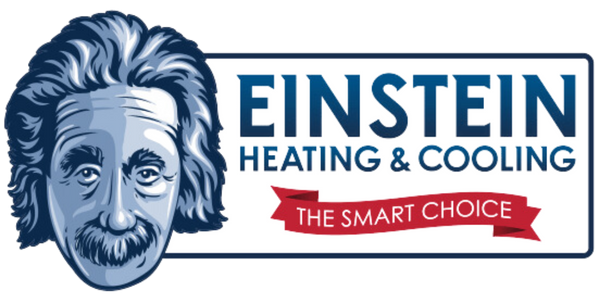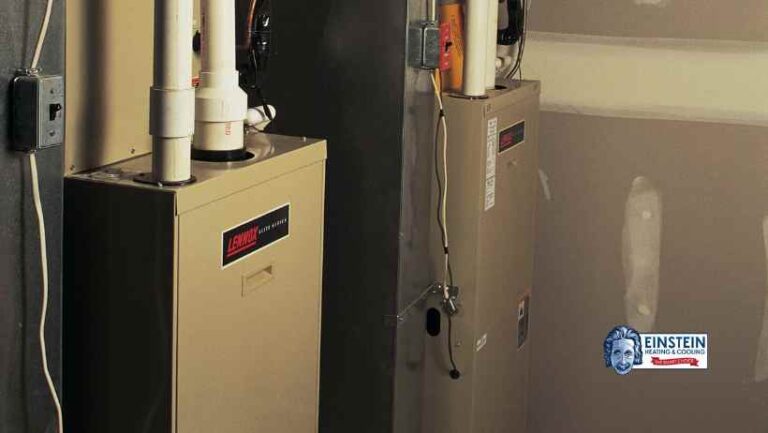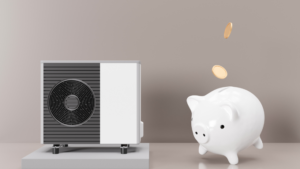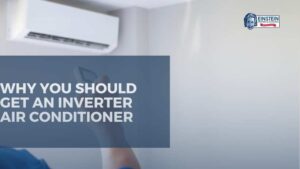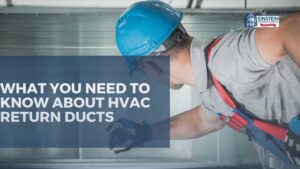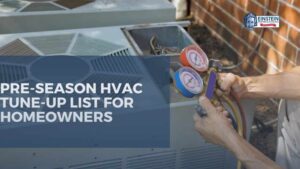As the seasons change and temperatures drop, ensuring your home’s heating system is in optimal condition becomes paramount. If you find yourself searching for how to replace your furnace, this comprehensive guide will walk you through the intricate process, providing detailed insights and invaluable tips on how to replace your furnace effectively.
When Do You Need to Change Your Furnace?
Evaluate the Age of Your Furnace
One of the primary indicators of a furnace in need of replacement is its age. Most furnaces have a lifespan of 15-20 years, and as they approach or exceed this range, their efficiency tends to decline. An older furnace is not only less energy-efficient but may also become more prone to frequent breakdowns, making replacement a sensible consideration.
Energy Efficiency Analysis
Take a closer look at the energy efficiency of your current furnace. Modern units often come with higher energy efficiency ratings, meaning they can provide the same level of warmth using less energy. Investing in a more efficient model can lead to substantial cost savings on your energy bills over the long term.
Frequent Repairs
If you find yourself frequently calling in technicians for repairs and seeing signs for a heating system replacement, it might be more economically sound to invest in a new furnace. Constant repair costs can accumulate quickly, and a new, reliable unit could prove to be a more cost-effective and hassle-free solution in the long run.
How To Choose the Right Furnace Replacement?
Calculate Heating Load
Before selecting a new furnace, it’s crucial to determine the heating load of your home. Factors such as square footage, insulation, and climate play a significant role in this calculation. Knowing your heating load helps you choose a furnace with the appropriate heating capacity to keep your home comfortable.
Energy Source
Decide on the energy source for your new furnace. Choices include natural gas, propane, oil, or electricity. Consider factors such as availability, cost, and environmental impact when making this decision, ensuring it aligns with your preferences and meets local regulations.
Research Furnace Types
Furnaces come in various types, each with its advantages and disadvantages. Forced air, radiant, and geothermal systems are among the options. Research and understand the characteristics of each furnace type to choose the one that best fits your heating needs, budget, and environmental considerations. If you’re still on the fence about installing a furnace, make sure to read resources to check out if a furnace or heat pump is the perfect fit for you.
Forced Air Furnaces
Forced air furnaces are the most common type found in residential settings. They operate by heating air within the unit and then distributing it throughout the house via a system of ducts and vents. One notable advantage of forced air systems is their ability to incorporate air filters and humidifiers, contributing to improved indoor air quality. However, it’s important to note that forced air furnaces can be less energy-efficient compared to some other types, as they may experience heat loss through the ductwork.
Radiant Heating Systems
Radiant heating systems function by distributing heat directly to the objects and surfaces in a room, creating a comfortable warmth that radiates throughout the space. This type of furnace is particularly favored for its ability to provide consistent and even heating without the need for ductwork. While radiant heating can be energy-efficient and offer precise temperature control, the installation process can be more complex and expensive.
Geothermal Heat Pumps
These systems transfer heat between the ground and the home, offering high energy efficiency and reducing greenhouse gas emissions. Geothermal systems are environmentally friendly and can significantly lower utility bills over time. While geothermal heat pumps have a higher upfront cost, they often pay off in long-term savings and are considered a sustainable heating solution.
Electric Furnaces
They are typically smaller in size and do not rely on combustion, making them suitable for homes without access to natural gas or propane. Electric furnaces are known for their simplicity and ease of installation, as they don’t require venting or a flue. However, electric furnaces can be less energy-efficient compared to other types, especially in regions with high electricity costs.
Dual Fuel or Hybrid Systems
Dual fuel or hybrid systems combine the efficiency of a heat pump with a backup heating source, often a gas furnace. In milder weather, the heat pump operates, providing energy-efficient heating. When temperatures drop, the gas furnace takes over to ensure reliable warmth.
While dual fuel systems offer versatility and efficiency, they require careful integration and may have higher upfront costs.
Boiler Systems
Boiler systems, commonly used for radiant heating, circulate hot water or steam through pipes to radiators or underfloor heating systems. Boiler systems are known for their energy efficiency, quiet operation, and longevity. However, the installation process can be more intricate, involving piping and, in the case of steam systems, the need for careful pressure control.
How Much Does it Cost to Replace Furnace?
Cost of the Furnace
Research the cost of the furnace model you’ve selected. Prices may vary based on brand, features, and energy efficiency. Obtain quotes from multiple suppliers to ensure you get a competitive price that aligns with your budget. On average, homeowners can expect to spend between $2,500 to $7,500 for a standard furnace installation.
Installation Costs
In addition to the furnace cost, budget for installation expenses. Installation costs can vary based on location and the complexity of the installation process. While some homeowners may opt for a DIY approach, hiring a professional ensures a safe and efficient furnace replacement. For a more accurate estimate, it is recommended to consult with licensed HVAC professionals. They can assess your specific requirements, evaluate the scope of the installation, and provide you with a detailed timeline and cost estimate tailored to your home’s unique characteristics and heating needs.
Potential Rebates or Incentives
Explore potential rebates or incentives for energy-efficient furnace replacements. Many governments and utility companies offer financial incentives to encourage homeowners to upgrade to more efficient systems. Take advantage of these opportunities to offset the overall cost of your furnace replacement.
How to Remove Old Furnace?
Turn Off the Power
Begin the removal process by ensuring the safety of the workspace. Turn off the power to the furnace at the circuit breaker, eliminating the risk of electrical accidents during the replacement.
Disconnect Gas and Electrical Connections
Safely disconnect the gas and electrical connections to the old furnace. Follow manufacturer guidelines and, when in doubt, consult with a professional technician to ensure a secure and error-free disconnection process.
Uninstall the Old Furnace
Carefully uninstall the old furnace, paying attention to any connections or components that may be reused with the new unit. Properly dispose of the old furnace following local regulations, ensuring environmentally responsible disposal.

How To Install The New Furnace?
1. Prepare the Installation Site
Clear the installation site, ensuring there is adequate space for the new furnace. Proper ventilation is crucial, and any necessary adjustments should be made to accommodate the dimensions of the new unit.
2. Connect Gas and Electrical
Follow the manufacturer’s instructions to connect the gas and electrical components of the new furnace. Thoroughly check and double-check all connections to ensure they are secure and properly sealed, minimizing the risk of leaks or malfunctions.
3. Test the System
Before finalizing the installation, conduct a thorough test of the new furnace to ensure it operates correctly. Pay attention to any unusual noises, odors, or performance issues that may require adjustments before sealing the installation.
4. Seal Ductwork
Maximize the efficiency of your new furnace by inspecting and sealing any gaps or leaks in the ductwork. Ductwork installation can be lengthy and difficult hence you must ensure that each step is done well to avoid future problems. Well-sealed ducts prevent heat loss and contribute to the overall performance and energy efficiency of your heating system.
5. Insulate the System
Enhance energy efficiency further by adding insulation to your furnace and ductwork. Adequate insulation helps retain heat, reducing the workload on your furnace and contributing to long-term energy savings.
6. Air Quality Considerations
Take into account the impact of your new furnace on indoor air quality. Consider installing air filters or purifiers to ensure a healthy living environment. Many modern furnaces come equipped with advanced filtration systems that contribute to improved air quality.
7. System Calibration
Calibrate the new furnace according to the manufacturer’s specifications. This may involve adjusting settings for optimal performance and energy efficiency. A well-calibrated system ensures consistent and reliable heating throughout your home.
8. Thermostat Configuration
Confirm that your thermostat is compatible with the new furnace and configure it to meet your heating preferences. Upgrading to a programmable thermostat provides additional control and the potential for energy savings by adjusting temperatures based on your daily schedule.
9. Final Inspection
Conduct a final inspection of the entire system before considering the replacement process complete. Check for any issues or discrepancies and address them promptly. If uncertain about any aspect, consult with a professional technician to ensure the new furnace operates at its best.
Why Choose Einstein Heating and Cooling
1. Expertise and Professionalism:
Einstein Heating and Cooling stands out for its exceptional expertise and professionalism in furnace installation and replacement services. With a team of highly skilled technicians, the company brings years of experience to every project. Clients can trust that their heating needs will be handled with precision, adhering to industry standards and best practices. The commitment to professionalism extends beyond technical expertise, encompassing transparent communication, punctuality, and a customer-centric approach that ensures clients are informed and satisfied throughout the entire installation or replacement process.
2. Comprehensive Services and Customized Solutions:
Clients benefit from Einstein Heating and Cooling’s commitment to providing comprehensive services tailored to individual needs. The company understands that every home and heating system is unique, requiring personalized solutions. Whether it’s a straightforward furnace replacement or a more complex installation involving ductwork modifications, the team at Einstein Heating and Cooling has the knowledge and flexibility to address diverse requirements. From the initial assessment to the final inspection, clients can expect a thorough and customized approach that ensures optimal performance and efficiency of their heating systems.
3. Quality Products and Energy Efficiency:
Einstein Heating and Cooling prioritizes the use of high-quality products and emphasizes energy efficiency in all furnace installations and replacements. Clients can choose from a range of top-tier furnace models known for their reliability and advanced features. The company is committed to helping clients reduce their energy consumption and environmental impact by recommending and installing energy-efficient furnaces. By combining expertise with a focus on quality and sustainability, Einstein Heating and Cooling not only ensures immediate comfort for clients but also contributes to long-term energy savings and a greener, more eco-friendly home heating solution.
In conclusion
Replacing a furnace in Bend, Oregon is a complex but rewarding project that can enhance your home’s comfort and energy efficiency. By thoroughly assessing the need for replacement, choosing the right furnace, budgeting wisely, removing the old unit with care, installing the new system diligently, sealing and insulating effectively, and testing and fine-tuning meticulously, you can navigate the process of replacing a furnace successfully. For your professional furnace installation and replacement needs, contact Einstein Heating and Cooling today.
